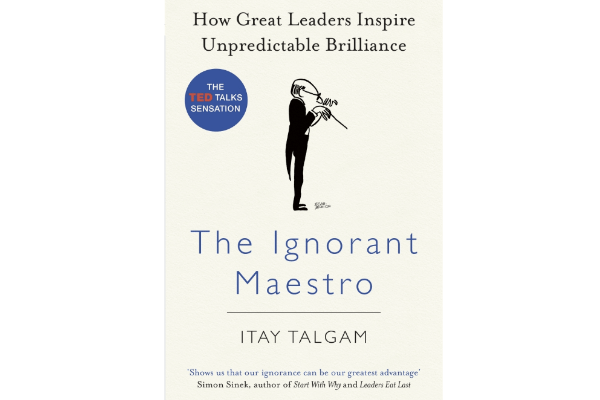Leadership is not about having a title. It is about influence, presence, and the ability to guide others toward a common purpose. Over the years, I have had the chance to observe different leaders in action. What stood out most was that the best leaders adapt. They do not stick to one fixed way of working. They change their approach based on people, context, and purpose.
Understanding leadership styles has helped me reflect more deeply on my own choices. Whether you lead a team directly or influence without authority, becoming aware of your leadership style is a step toward intentional, meaningful leadership.
Let me walk you through seven leadership styles that I have seen in action. You may find one that feels familiar or discover one that you want to grow into.
1. Autocratic Leadership
Table of Contents
This style is centered on control and direction. The leader makes decisions alone and expects compliance. It can feel rigid, but in high-risk or high-stakes situations, this approach may be necessary. Think of a manufacturing plant, a hospital emergency room, or a crisis situation where quick decisions can save lives.
The upside is that it reduces ambiguity. The downside is that it may suppress new ideas or reduce morale over time if overused.
I have found this style effective when timelines are tight or when clarity must trump consensus. But I also remind myself to follow it with a conversation, not just a command.
Challenge to watch for: Does your need for control reduce trust?
2. Democratic Leadership
This style is about inclusion and collaboration. The leader invites input, listens, and then makes decisions. This works beautifully when the goal is to build team commitment or foster innovation. People support what they help create.
I once worked on a product development sprint where the leader invited everyone to contribute ideas. Even the quietest voice in the room had space to be heard. Not all suggestions were used, but the energy in the room was incredible. People felt seen and valued.
The flip side is that this approach can slow things down when a quick decision is needed. But when done well, it creates ownership and trust that lasts.
Benefit: Shared decisions lead to stronger alignment.
3. Transformational Leadership
This style focuses on vision and inspiration. The transformational leader paints a picture of what is possible and motivates people to stretch beyond their limits. This style is often seen in startups, change management, and fast-growing companies.
A leader I once admired would speak less about metrics and more about meaning. He helped us see how our work connected to a larger purpose. People did not just perform better. They grew.
However, transformation needs a solid foundation. You cannot lead with vision alone. You must also support with structure, resources, and real-time feedback.
Learn more about building high-performance teams here.
4. Servant Leadership
This style flips the traditional model of leadership. Instead of asking people to serve the leader, the leader serves the team. It is grounded in empathy, humility, and support.
I discovered the power of this style while working with a team going through burnout. Instead of pushing harder, the leader listened, removed barriers, and created space to recover. The result was not just performance, but loyalty.
Servant leadership works well in team cultures that value trust, listening, and wellbeing. But it needs clarity too. Without boundaries, leaders may end up over-functioning for the team.
Key reminder: Being supportive is not the same as being passive.
5. Laissez-Faire Leadership
The laissez-faire leader gives a high level of autonomy. People make their own decisions and lead their own work. This works well with experienced or highly motivated teams. It also encourages innovation.
A software team I once worked with thrived under a leader who simply provided direction and then got out of the way. The team felt empowered and brought back creative solutions that exceeded expectations.
However, this style can backfire when clarity or accountability is missing. It is not about stepping back completely. It is about knowing when to step in.
Explore how to support autonomous teams through experiential learning here.
6. Transactional Leadership
This style is based on structure. Tasks are assigned, rules are followed, and rewards are given when goals are met. This is effective for achieving short-term targets or managing routine processes.
I used this style when leading a sales team during a quarterly campaign. Everyone knew the targets, timelines, and rewards. It created clarity and focus.
But transactional leadership does not always inspire. Over time, people may become disengaged if they do not see meaning beyond rewards.
Tip: Use this style with care. Blend it with feedback, learning, and coaching to create a richer experience.
7. Coaching Leadership
This is the style I personally strive to build. The coaching leader focuses on development. They ask more than they tell. They challenge, encourage, and create space for reflection. This is powerful for growing individuals and building long-term capability.
When I shifted from giving advice to asking questions, my team’s confidence grew. People came up with their own solutions and felt proud of their progress. Coaching also helped me become a better listener.
It takes time, but the results are transformational.
Discover how coaching helps unlock leadership potential here.
Choosing the Right Style
No leadership style is perfect. The key is to be flexible. The best leaders switch styles based on context. For example, I may start with a coaching style, but if there is a crisis, I may need to become more directive. The art lies in knowing what the situation needs and having the self-awareness to shift.
Here are some questions I ask myself:
- What does my team need right now? Is it clarity, motivation, or space?
- Is my style helping or hindering?
- Am I choosing this approach consciously, or out of habit?
Feedback helps too. Asking your team what they need more of, or less of, can offer powerful insight.
Takeaway for the Workplace
In today’s hybrid, fast-paced world, a single leadership style may not be enough. Teams are diverse. Needs are dynamic. By understanding and practicing these seven leadership styles, we can become more responsive, inclusive, and intentional.
Often, what feels like a performance issue is actually a leadership gap. A mismatch between what a team needs and how they are being led. Fixing this does not require drastic change. It begins with awareness.
Final Thoughts
Leadership is not a formula. It is a series of moments. Moments where you choose to inspire, to decide, to listen, or to serve.
I encourage you to take stock. Which of these seven styles comes naturally to you? Which one stretches you?
Growth begins with reflection. The more flexible we are as leaders, the more resilient and empowered our teams become.
Let us lead with presence. Let us lead with purpose.










